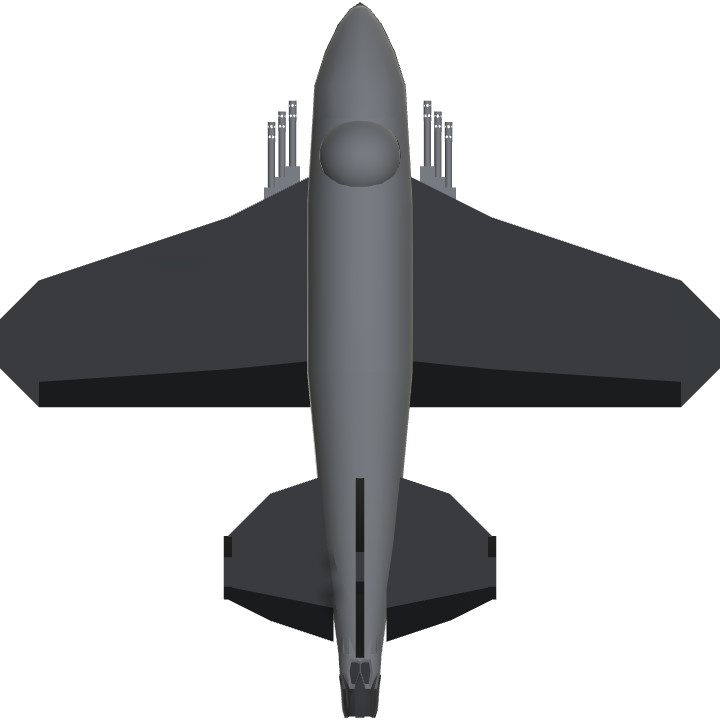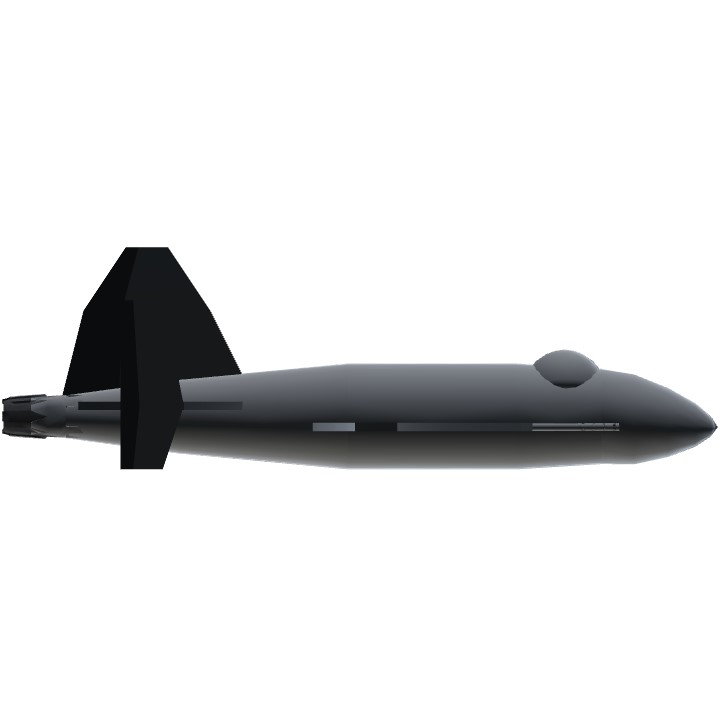I did minimal changes to the aircraft, tried to make as little changes to the looks as I can while making it airworthy. But I do find this plane interesting as it is a good example on a lot of the design strats I use.
So to MrHoboDuck, and to all of the new players who just started designing aircrafts, here are several hacks that people don't talk about when it comes to performance of aircrafts
A lot of people spend a lot of time on details, looks and cosmetics, and then cry for help "how do I make it fly". Well, as someone who's not really into cosmetics, but dug miles deep into the rabbit hole of exploiting the in game physics engine, I can tell you one thing, everything in this game can be made to fly well. I am going to use this plane as example, for some of the mistakes in the original file, and how I fixed them
So, first problem of the bunch, the engine simply is not working. VTOL engine, with the 4 vector thrusters installed, provides thrust that turns the aircraft, but not propel it. While it does have a low drag profile, its size and mass simply does not allow it to be flown properly as a glider. On top of that, there are no intakes to feed the engine, meaning the engine was at most providing 25% of its max thrust. I removed the VTOL engine and thrusters, installed a small jet engine in the back where there's a perfect space for it, and installed intakes inside the nose (yes, those little things works even when they're completely covered)
Now that basic propulsion is solved, let's move onto fuselage design. My suggestion for a good fuselage is: use as little dead weight as possible, and don't spam fuel into every single container. The original plane did well on not spamming fuel, but used too much dead weight. A lighter plane means better acceleration, better climb, and better maneuverability. As long as the CoM is balanced (you should have learnt this in the in game tutorial), shed as much weight as possible
The weight of the fuselage links directly into the final part of the design problems: wings. Before anything, the rudder setting on 2 of the vertical stabilizers are inverted, and I fixed that, always check your control surfaces so you don't make this mistake again. Then comes the important part, and probably the part where a lot of people misunderstood: the loop radius and the angular turning speed of the heading are two completely different things. You can be pitching your nose up 90 degrees within a second while your plane is still going straight ahead without actually pulling up. Spamming large control surfaces only increase your angular turning speed, but does not help with your actual turning radius. If anything, they make your angle of attack so big, your plane simply just enters a stall or spin, causing it to feel uncontrollable and slow responding.
My suggestion is, decrease your pitch surface size, and increase your wing surface area. The more wing surface area you have, and the lighter your entire plane is, the smaller your actual turning radius is. There's a stat on the stats card called "Wing Loading", which is basically your plane mass divided by your wing surface area. This number is perfect for us to predict how well our plane will perform, the lower the number, the better it will fly. For every plane I suggest a number lower than 35lb/ft^2, and for more maneuverable planes I suggest a number lower than 18lb/ft^2. Of course you can go over or under that number, it's just a suggestion. To lower this number, again, you can either lighten up your aircraft or increase the size of your wings. Since I already suggested to lighten up your aircraft as much as you can already (and assume you did it), your only option would be to increase the size of your wing. But does that mean changing how your plane looks? No, in the game, stacked wings act just like normal wings, so you can take your wings, copy it, place it somewhere on the fuselage, and nudge it with the in game fine tuner to the exact place of your original wing. This way, you get the effect of multiple wings, with the look of only 1 wing. If you look at how I modified this plane, you can see me doing that exact strat as I stacked multiple copies of the main wing on top of one another.
I hope these information helped you, even by a tiny little bit, on your future designs.
TLDR: if you're looking forward to easy tricks to improve your aircrafts, download both original and this version of the aircraft, actually go read the paragraphs, and compare the versions. If you're just scrolling by looking for a nice aircraft, ignore those giant paragraphs I just wrote
Specifications
Spotlights
- 11qazxc 3.0 years ago
General Characteristics
- Predecessor Modify this plane challenge
- Created On Windows
- Wingspan 27.9ft (8.5m)
- Length 27.8ft (8.5m)
- Height 8.5ft (2.6m)
- Empty Weight 4,831lbs (2,191kg)
- Loaded Weight 10,491lbs (4,758kg)
Performance
- Power/Weight Ratio 0.321
- Wing Loading 13.6lbs/ft2 (66.2kg/m2)
- Wing Area 773.7ft2 (71.9m2)
- Drag Points 909
Parts
- Number of Parts 55
- Control Surfaces 30
- Performance Cost 223





Srry I’m a little late hehe
Wow this is noice, I’ll try to make a plane with these tricks@Zuikaku
Thank you man, you helped me a lot! Sorry I couldn't upvote you :'(
@MrHoboDuck you better read those paragraphs, even just skim over them, it will (hopefully) help you through your troubles